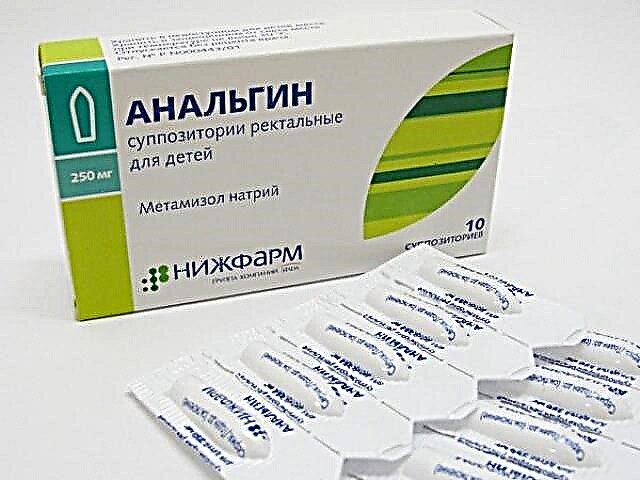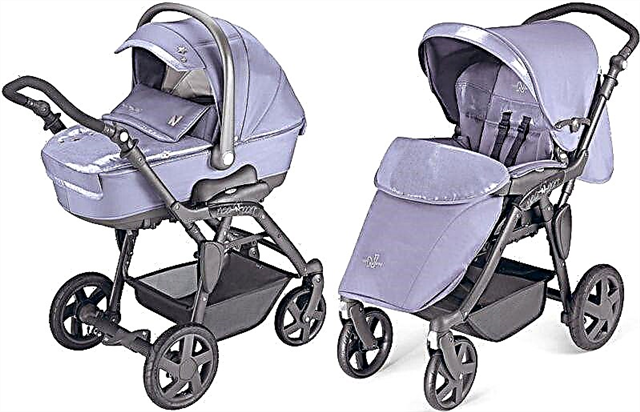
A compound such as sodium chloride is widely used in medicine, including pediatrics. Droppers with a solution of this salt help from dehydration and intoxication, rinsing the nose helps to get rid of a runny nose, and inhalation relieves the condition when coughing. Such a medicine is harmless even for newborn babies, has an affordable price and is sold in all pharmacies. He is praised by mothers and many doctors, including Dr. Komarovsky.

Types of drugs
Sodium chloride is presented in the form of solutions with different concentrations.
- A 0.9% solution is called physiological (saline) or isotonic, since it is similar to blood plasma. It is sold in 5-10 ml glass ampoules, as well as in 200 ml, 400 ml or other bottles. Usually these products are simply called "Sodium Chloride", but sometimes there are additional words in their name indicating the manufacturer, for example, "bufus", "Brown" or "Vial". For local use, the drug "Physiodose" is produced, represented by an isotonic solution in plastic dropper bottles of 5 ml. In addition, you can buy Aqua-Rinosol nasal spray at the pharmacy, in one bottle of which there is 20 ml of saline.
- Hypertonic solution, the concentration of which is higher than 1% (often 3% or 10%). It is used in the form of injections in hospitals, and can also be prescribed for external treatment. For home use for the treatment of injuries, inflammation and purulent wounds, it is prepared from table salt and boiled water, adding 1-10 g of salt per 100 ml of liquid.
- A 0.65% solution is hypotonic. It is in demand in the practice of ENT doctors and can be used both for hygiene procedures and for treatment. This solution is presented in the preparations "AquaMaster", "Salin", "Aqua-Rinosol" and "Nazol Aqua". They are available in 20 ml, 30 ml or 50 ml glass and plastic bottles, complemented by a spray bottle.

Action on the body
Sodium chloride is an essential component of blood plasma and is constantly present in the body in a certain amount to maintain the osmotic pressure of the blood. If there is a shortage of it due to vomiting, diarrhea, burns and other reasons, water begins to move from the vessels into the tissue, which leads to thickening of the blood, smooth muscle spasms, disruption of the heart and nervous system. In such situations, it is necessary to replenish sodium chloride from the outside in the form of injections.
If a hypertonic solution of such a salt is used, it will not only replenish the lost ions of chlorine and sodium, but also increase urine output. External use of solutions with a hypertonic concentration helps in the treatment of purulent wounds, as it increases the secretion of pus and has some antimicrobial effect. Treatment of bruises, sprains, insect bites, inflamed joints or bruises with a hypertonic solution helps to reduce swelling.
As for hypotonic and isotonic solutions used to irrigate the mucous membranes, they provide hydration due to their low osmolarity.
Therefore, as a result of their use, nasal breathing is facilitated, excessively thick mucus is liquefied, dry crusts soften and are easily removed. In addition, such products wash away pathogenic bacteria, viral and allergenic particles from the surface.

Indications
Injection of saline is necessary in situations where the water-electrolyte balance is disturbed and there are symptoms of intoxication. Such a medicine is administered with indomitable vomiting, extensive burns, cholera, intestinal obstruction and other diseases. Another 0.9% NaCl solution is often used as a solvent when other injectable drugs are added to it. In addition, the mucous membranes of the nose, ear canals, conjunctiva and wounds on the skin are washed with this agent.
Nasal treatment with sprays and drops based on 0.65% sodium chloride is in demand for rhinitis and sinusitis provoked by ARVI, allergies and other problems. It is prescribed after nasal surgery.
In addition, such solutions can be used prophylactically to relieve dryness of the mucous membrane and clear the nasal passages of impurities.

Contraindications
The use of a sodium chloride solution in a stream or drip is prohibited in case of violations of the water-electrolyte balance, which led to an increase in the concentration of chlorine or sodium in the blood, as well as to hypokalemia or acidosis. Injections are also contraindicated for pulmonary or cerebral edema, as well as for diseases that can provoke such edema. If the patient has impaired kidney or heart function, the appointment of injections requires increased caution.
The use of sprays with sodium chloride is not recommended under the age of one year (drops are prescribed for infants). Another contraindication for such drugs is the intolerance of their components, which, in addition to NaCl, are benzyl alcohol, benzalkonium chloride, sodium hydrogen phosphate and other compounds.

Application methods
Depending on the reason for the appointment and the form of release, sodium chloride can be used in different ways.
- Irrigation of the nasal cavities. Such treatment is often performed with sodium chloride preparations produced in the form of a spray ("Aqua-Rinosol", "Salin", "AquaMaster", "Nazol Aqua"). In childhood, the product is sprayed with one touch into each nostril. The drug is used depending on the indications 1-4 times a day. If you need to soften accumulated mucus or remove excess secretions, the spray is applied repeatedly, and the excess solution is wiped off with a handkerchief or cotton wool until all contaminants are completely gone. If the child is less than a year old, turn the bottle over, and inject the solution into the nose drop by drop. In the same way, normal saline solution can be used for rinsing.
- Washing the ears. This procedure is recommended for active formation of sulfur (including sulfur jams), swimming in the pool and staying in places with high humidity or strong dust. Approximately 5 ml of saline is poured into each ear entrance, and then the remainder is wiped off.
- Eye wash. This manipulation is used both for contamination of the conjunctiva and before using other topical medications in the form of eye drops. Usually you need to inject 1-2 drops of isotonic sodium chloride solution into each eye, and then wipe them with a cotton pad or swab.
- Washing the wounds. As directed by a doctor, saline should be liberally applied to the injury, removing the remainder of the medication from intact skin.
- Inhalation. This method of using saline is used in the treatment of a common cold, various diseases of the throat, adenoids, ARVI, dry cough. The procedure is not performed in case of a tendency to nosebleeds, otitis media, fever, purulent rhinitis, heart failure. For one inhalation use from 3 to 15 ml of medication, pouring it into a nebulizer. The duration and frequency of this treatment depends on the age of the child. If saline is mixed with other medicines, then the dosage and proportions must be checked with a specialist.
- Injections. Intravenous administration of saline is prescribed and monitored by a doctor, individually determining single and daily doses of such a medicine. They depend on fluid loss, clinical presentation and the weight of the small patient. The duration of the use of droppers is also set for each child separately.
Reviews
The use of sodium chloride in childhood is generally well received. Mothers who have used saline for rinsing the nose consider it to be the main advantages. no age restrictions and side effects, quick relief from a cold, more affordable cost, when compared with Aqua Maris and other sea salt-based medicines. When using inhalation, parents note that sodium chloride solution perfectly moisturizes, helps to get rid of cough, is well tolerated.




